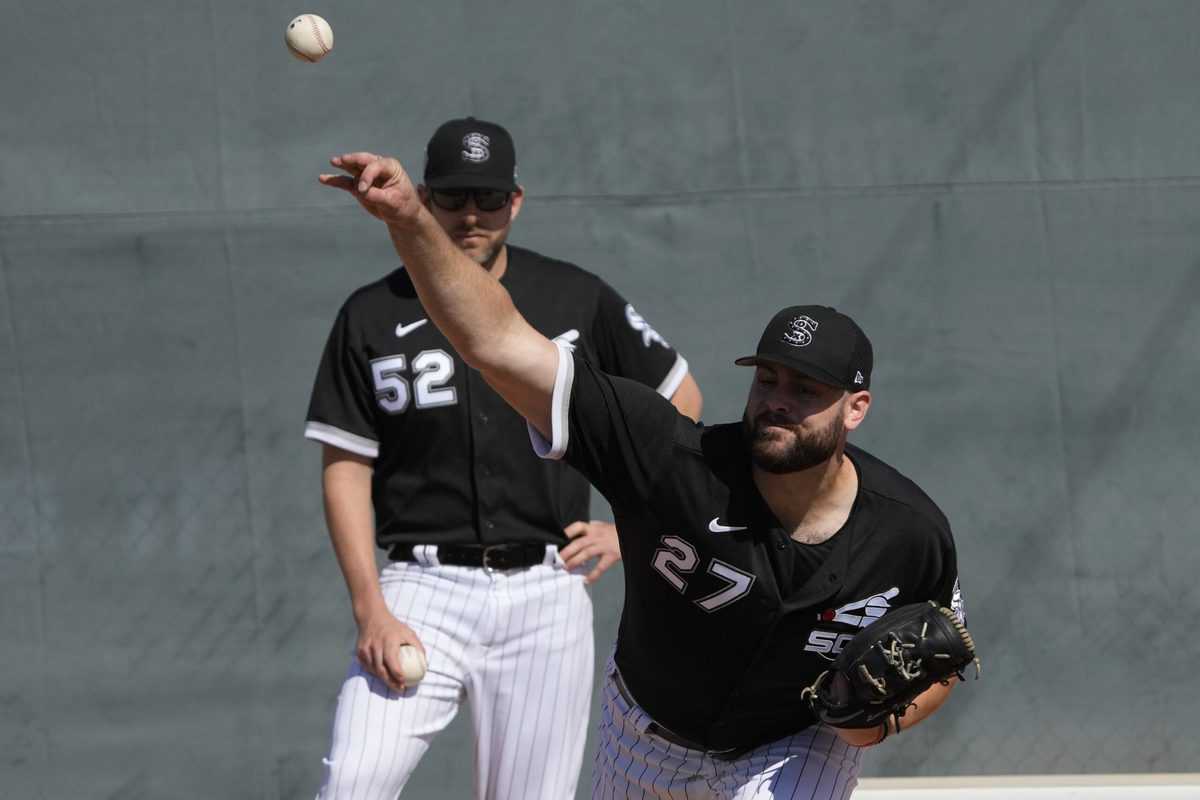Sure, White Sox fans might be irritated that excitement over the most promising White Sox season in 15 years has been sidelined by a grotesquely swollen investment in second-tier relievers and a salary squabble with their staff ace.
But if you just wrote about how early-career bargain extensions look like over-tilled soil for Rick Hahn and the White Sox, then you're ever so slightly satisfied by the White Sox and Lucas Giolito heading to arbitration over a difference of $200,000, or $50,000 if they had settled earlier.
The lesson here: If you root for yourself, you always control your own destiny.
PERTINENT: Tim Anderson, last of the White Sox's big-time bargains
In James Fegan's detailed assessment of Giolito's salary situation, he wrote about a four-year, $50 million contract extension the White Sox offered Giolito, and the way it nudged a very specific high-water mark ever so slightly higher.
Sources indicate that last spring the White Sox offered Giolito a contract extension before the 2021 season, which would have taken the place of the $4.15 million deal he and the team reached for his first arbitration-eligible season. The contract offer was for four years, $50 million guaranteed, and would have bought out Giolito’s three arbitration-eligible seasons and his first year of free agency. The offer also included a club option for the 2025 season.
The deal would not have set an MLB record for the largest extension for a starting pitcher with three full years of service time. That was set by Carlos Martínez’s five-year, $51 million deal (with two option years) with the Cardinals in 2017, and surpassed by Sandy Alcantara’s five-year, $56 million agreement with the Marlins reached this offseason. But it would be the largest four-year guarantee to a starting pitcher at a similar cutoff in their service time accumulation, surpassing Aaron Nola’s 2019 agreement with the Phillies for four years, $45 million with an additional club option year.
As I noted with Tim Anderson and the extension-signers who preceded him, this is how the market used to work. The level of guaranteed money was new and stunning, and as long as it represented the best a player had received at that point in a career, both sides could claim success. Then it became abundantly clear that the best players were selling their services for way too little, and such deals became much harder to strike.
In this case, $50 million isn't actually low-balling Giolito's earning potential over his next four years. He still has some achieving to do in order to beat that sum by himself. It'd have to look something like this:
- Arb 1: $4.15M
- Arb 2: $7.5M
- Arb 3: $13M
- FA1: $25M
That's the argument the White Sox would make in putting forth this offer. The disconnect is that somebody like Giolito sees the fourth year and the subsequent club option as getting in the way of locking in several $25 million salaries as soon as possible.
He has his reasons. Looking only at the White Sox, those club options prevented Gavin Floyd and José Quintana from reaching free agency at or near the height of their powers. If the Red Sox could've held off on extending Chris Sale during the last year of control they inherited from Chicago, he'd be in far more uncertain territory at this stage in his career. On the other side, Carlos Rodón just showed everybody how one can make up for a few lost moderate raises with just one well-timed season.
PERTINENT: Circling back to Dylan Cease's future after Carlos Rodón's contract
Summing it up, the White Sox want Giolito to take the bird in the hand, and Giolito is going for five to seven in the bush, treating one as a decent fallback. This is why I noted José Berríos' seven-year, $131 million extension with the Blue Jays as noteworthy back in November, because it shows what it looks like when a team addresses that particular desire.
If you’re going to draw up a contract extension for Giolito at this time, you can probably count on the first two years taking about $20 million, because that’s a nice round number reasonably approximating arbitration projections. The same total outlay to Berríos goes a little further in Giolito’s case, because that post-arb commitment would be five years and $111 million (AAV of $22.2 million), but Giolito can probably nudge that price tag higher if [the Noah Syndergaard signing] shows where the pitching market is headed.
The White Sox offered Giolito four years and $50 million before Berríos was even a Blue Jay, so we can't say the White Sox stridently ignored obvious market indicators, but it's fair to say it didn't anticipate desires, either. Fegan says Giolito's camp didn't respond to the White Sox's offer, as it was so far from what he wanted that offering a direct counter risked letting that 4/$50M anchor the negotiations.
Back when the White Sox achieved their ostensibly desired second-place finish in the Manny Machado derby, I wrote that the White Sox were Major League Baseball's Blackberry. Three years later, Blackberry's finally dead and the White Sox are very much not, but the tendencies that inspired that analogy remain alive. Market leaders maintain or gain share by doing things they said they'd never do, usually by acting as if they never said those things. Hahn has had to wrestle with his old, bold statements because he hasn't figured out a way to make them happen within his organization's self-imposed constraints.
"Innovate or die" falls short of an ultimatum in baseball as long as the Colorado Rockies are worth more than ever, but the methods the White Sox used to build this roster have gone stale, so extending this window is going to require some sort of shift, be it in paradigms or vibes. Then again, if the next one of those involves persistent anxiety and restlessness, perhaps the White Sox are truly the team for these times after all.





